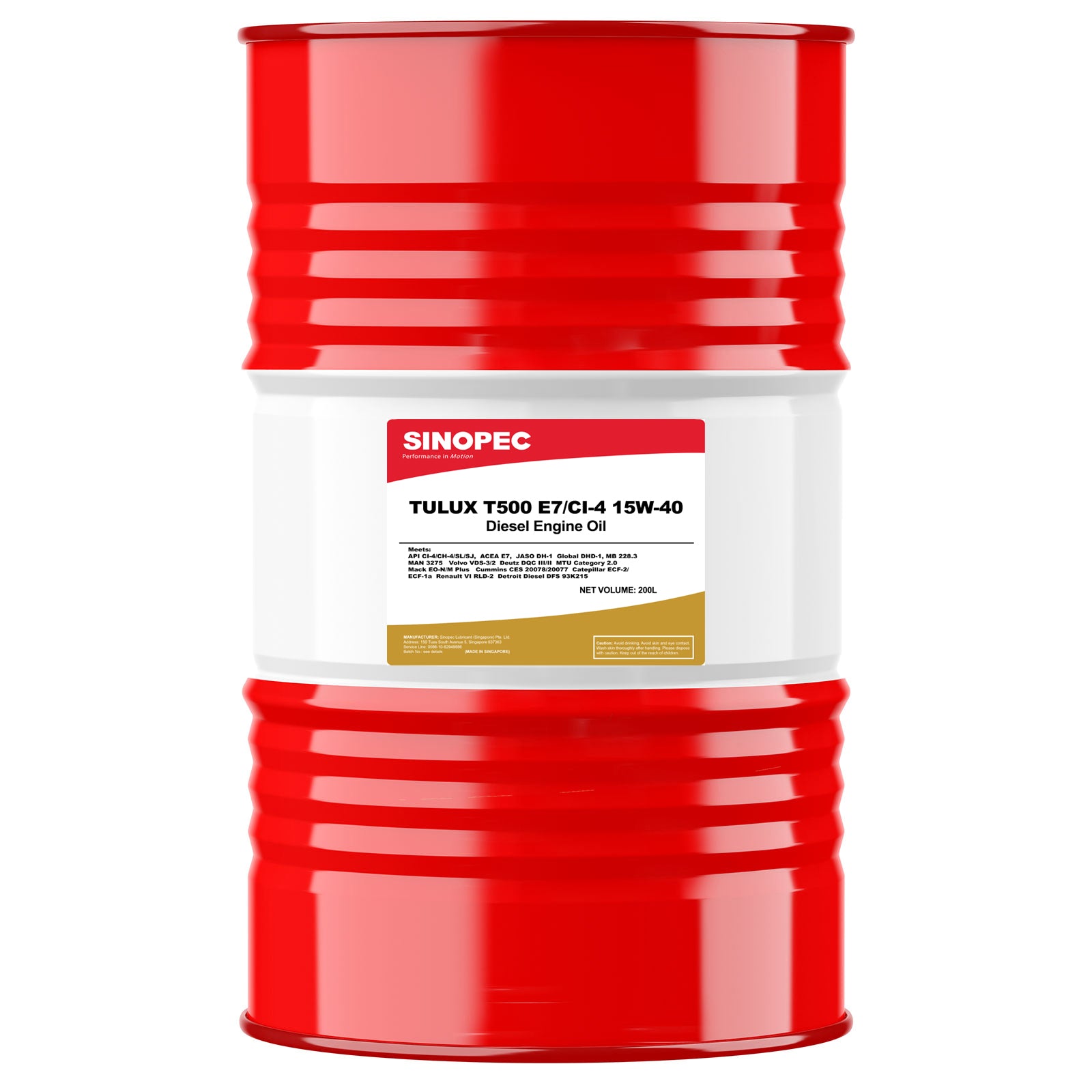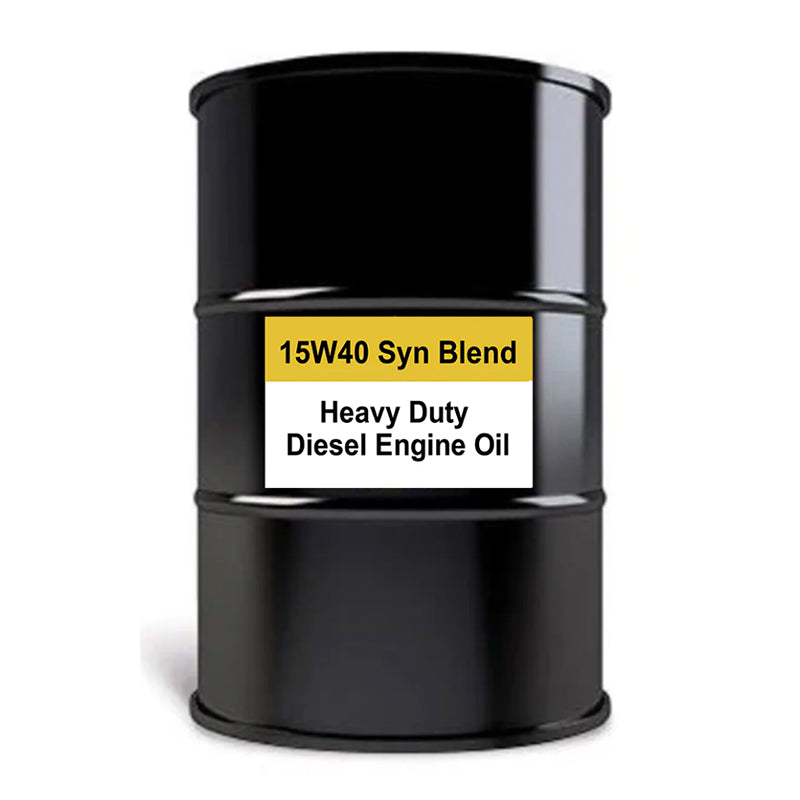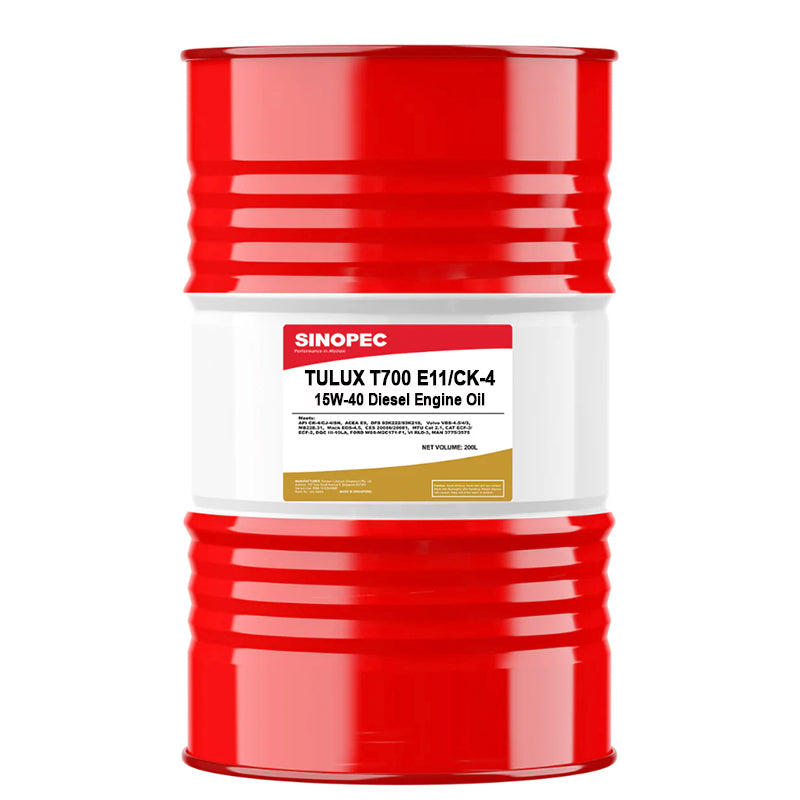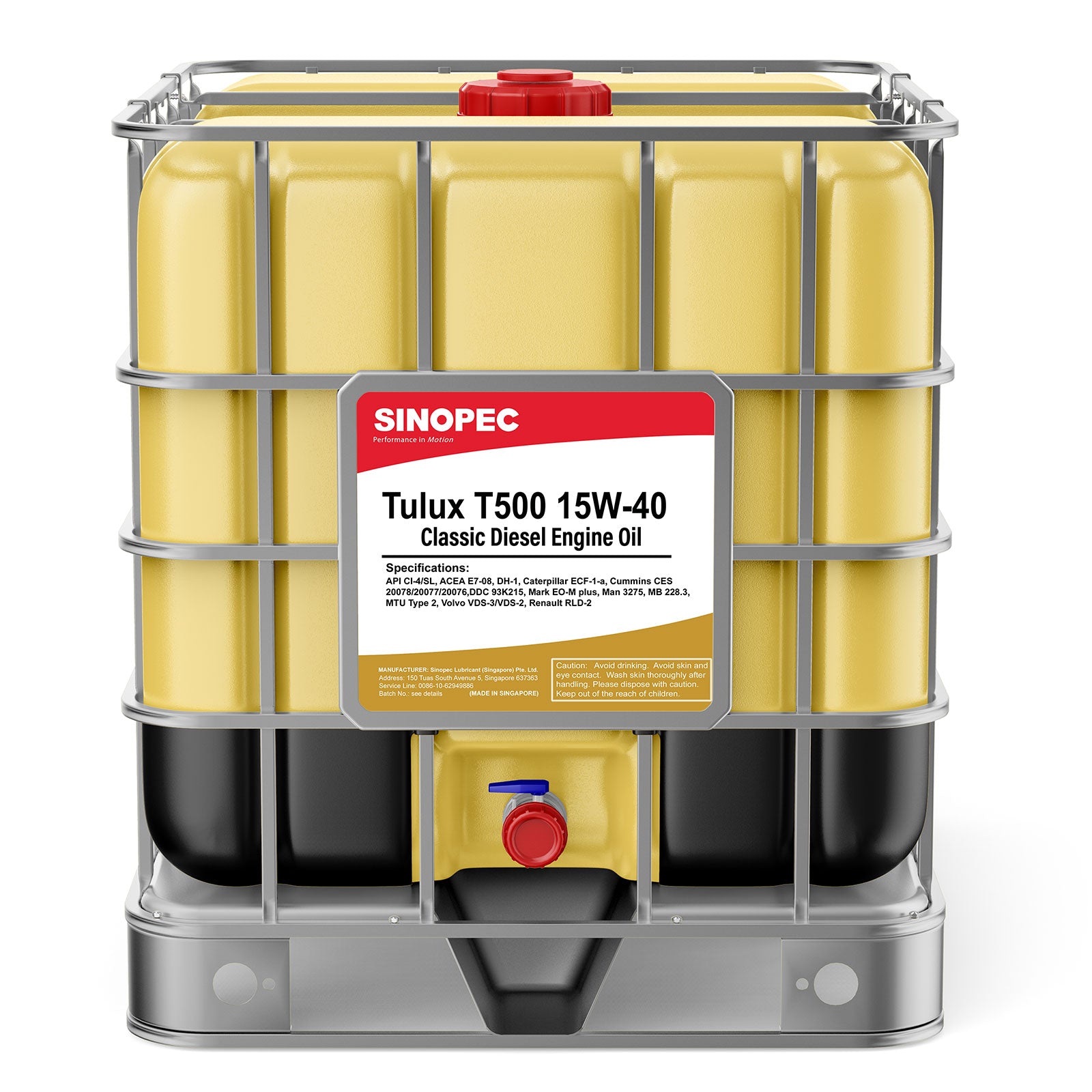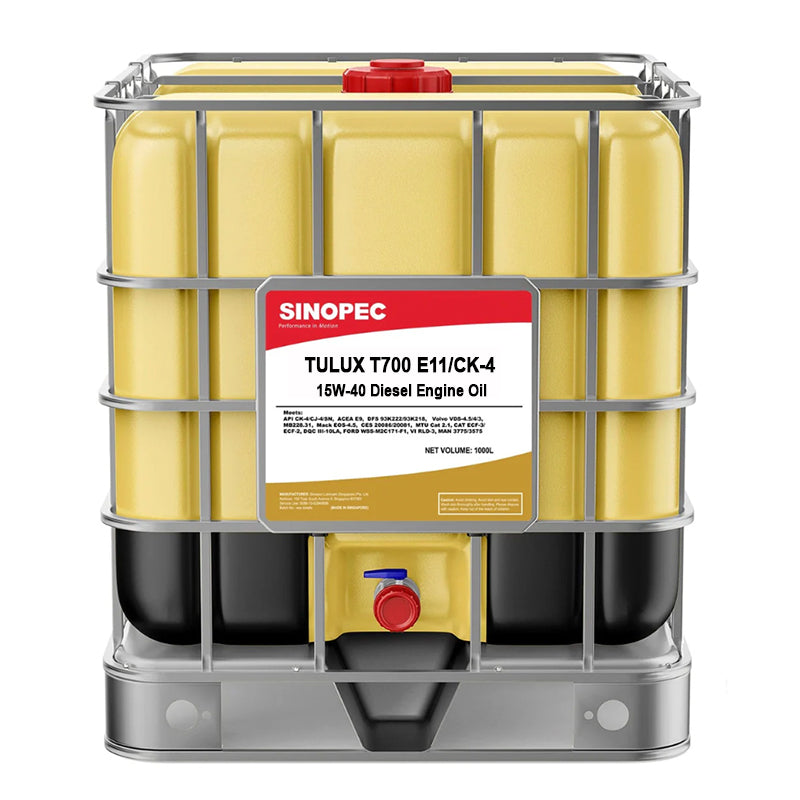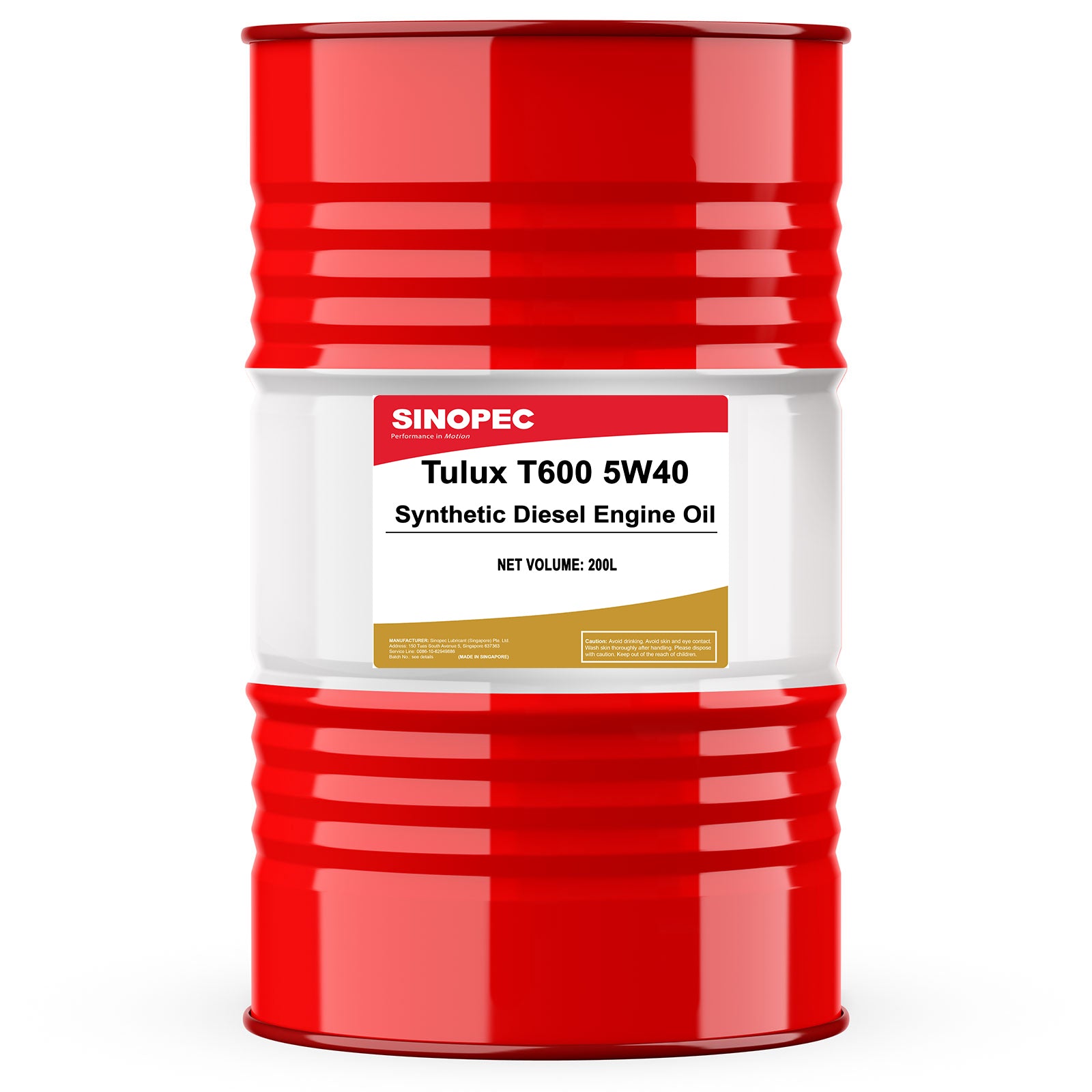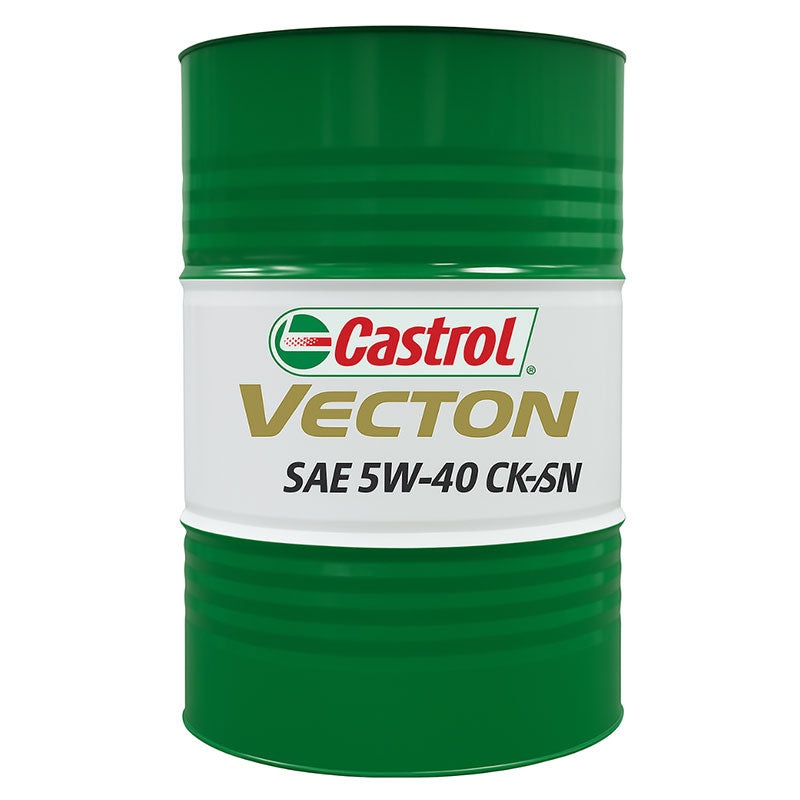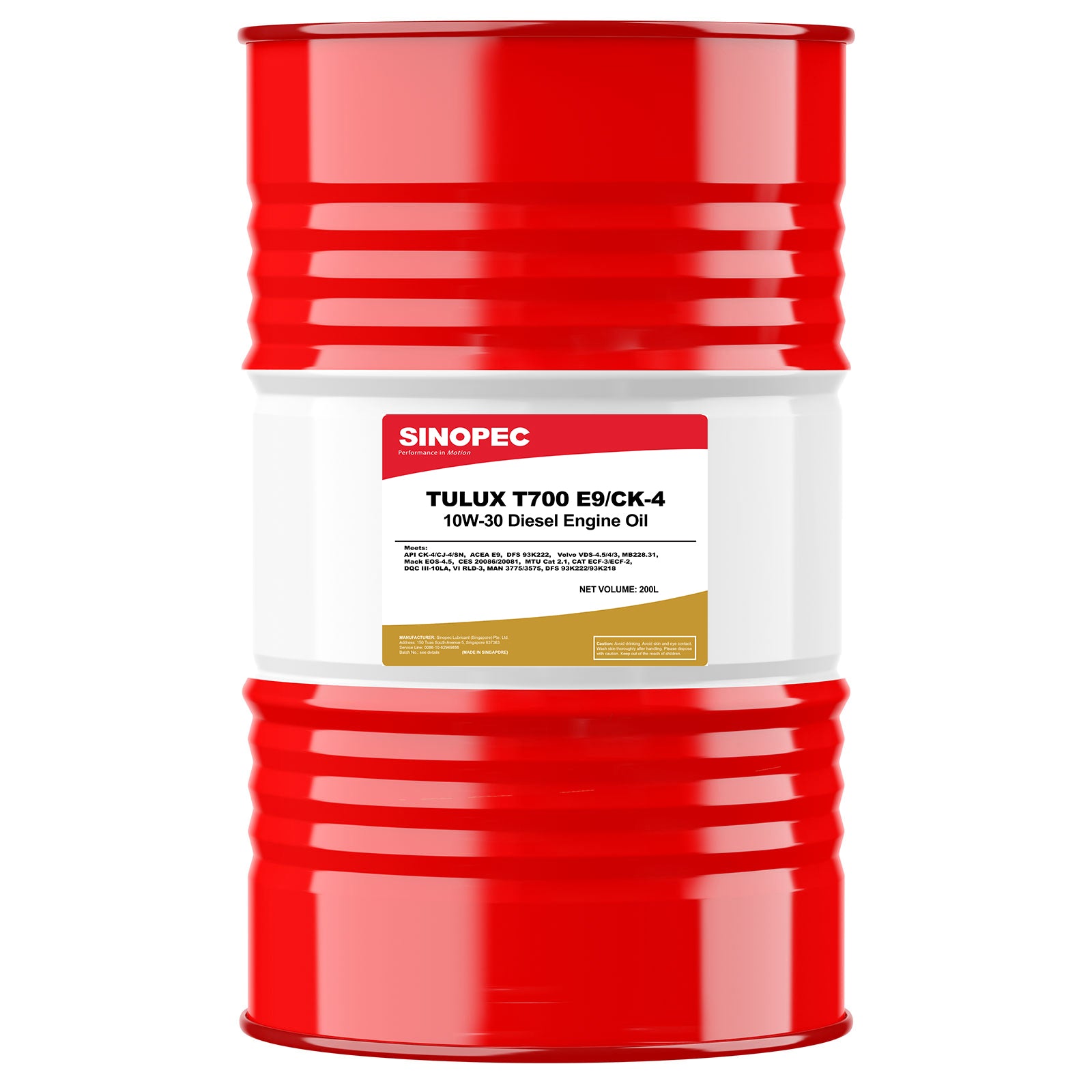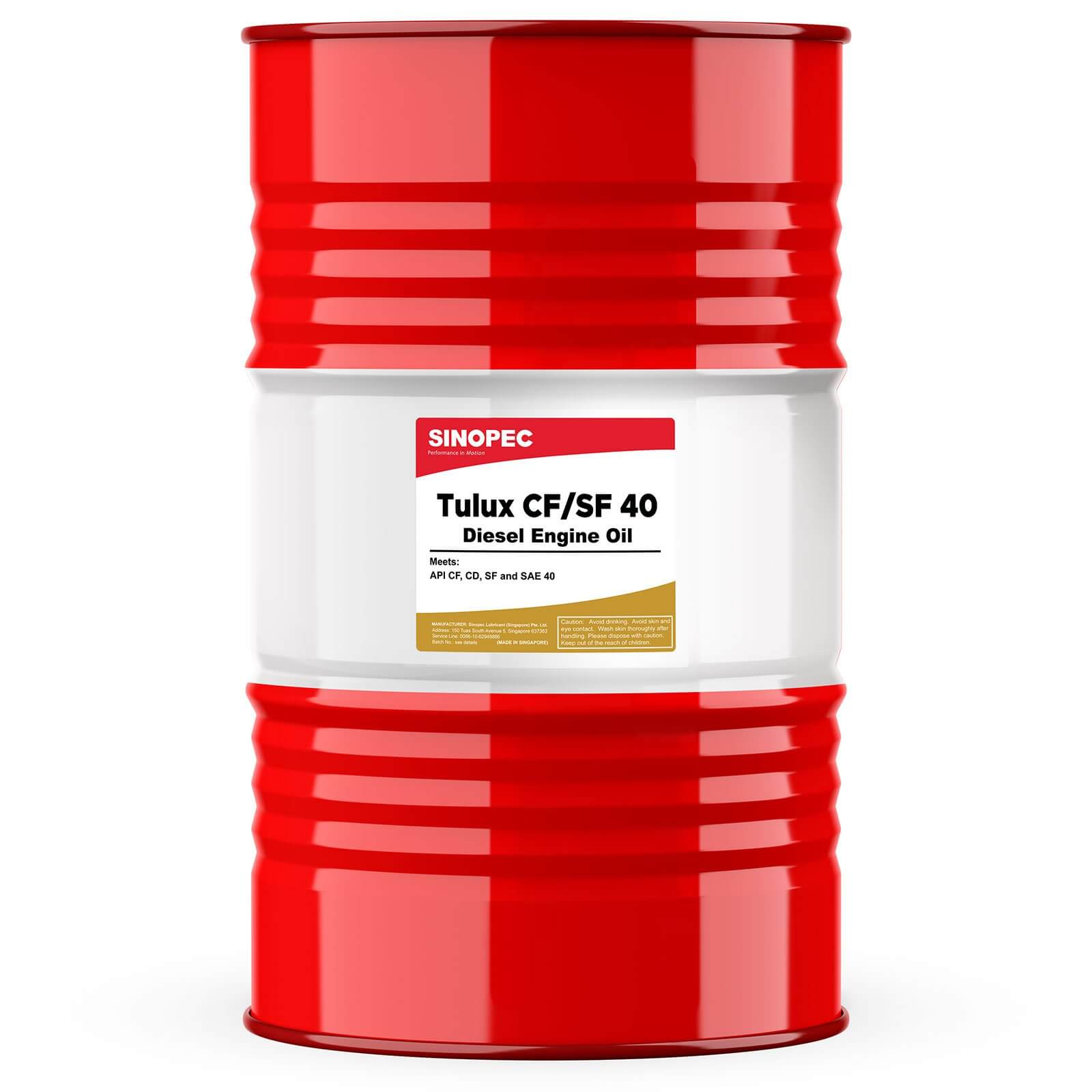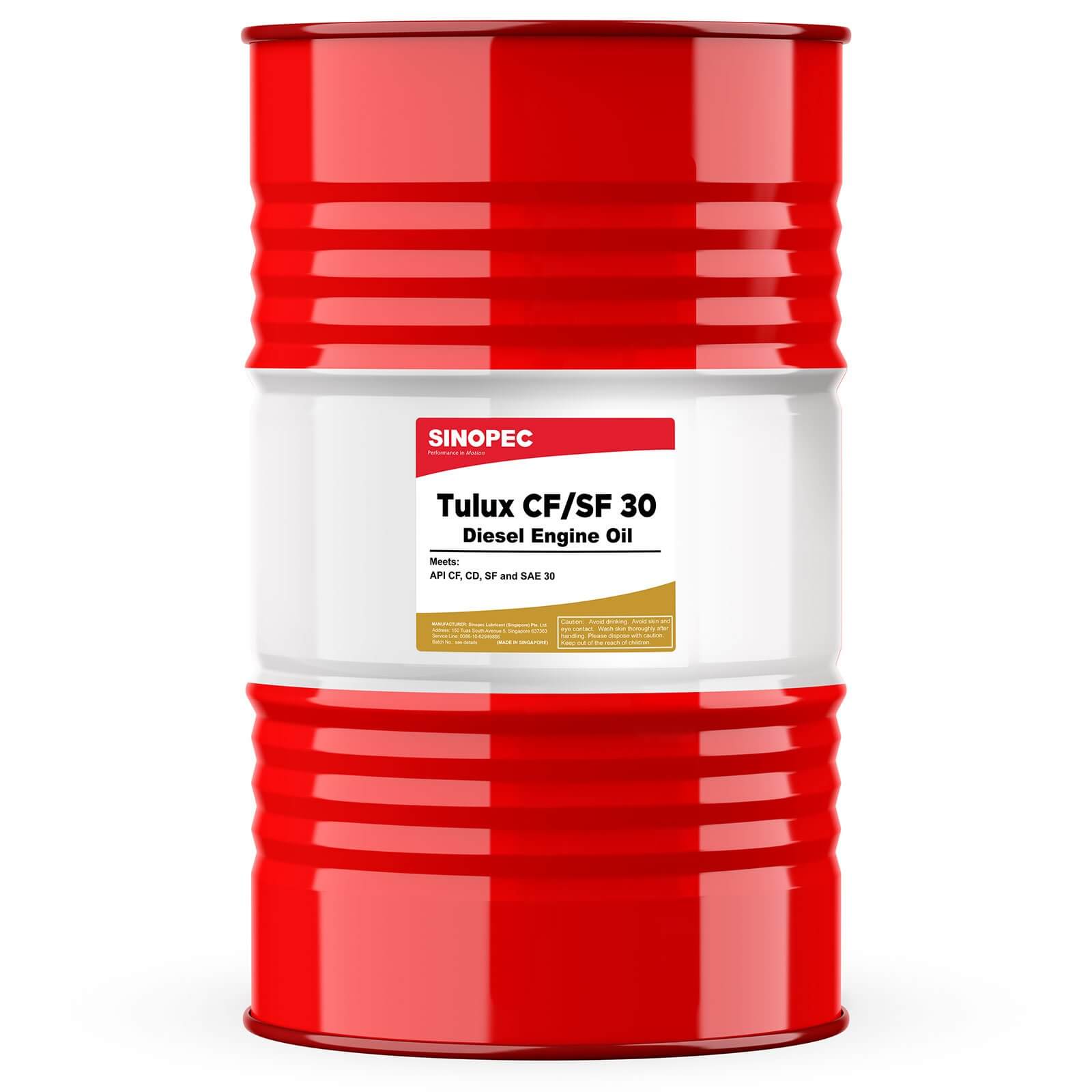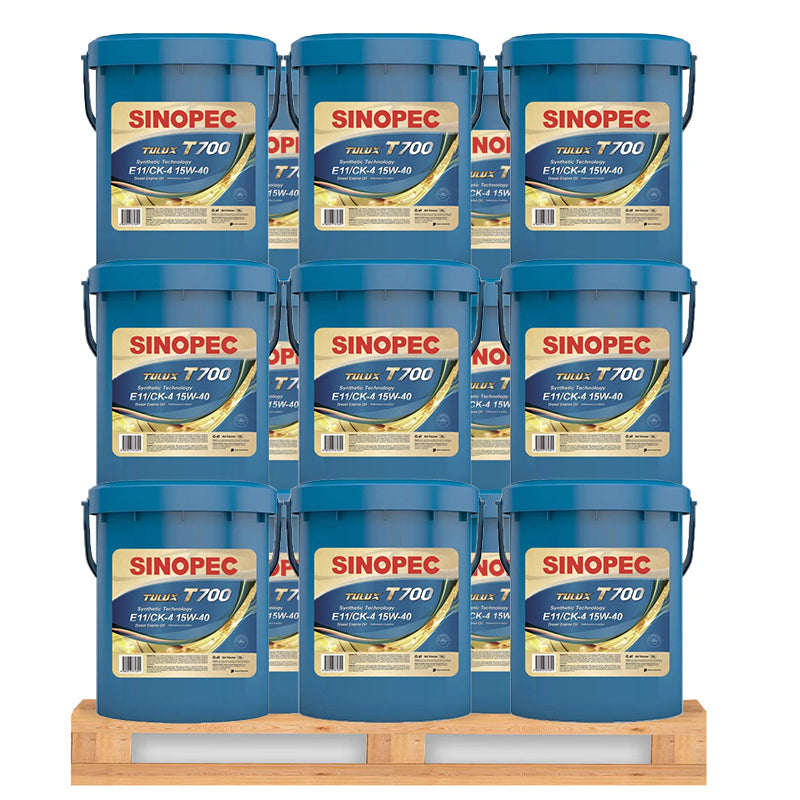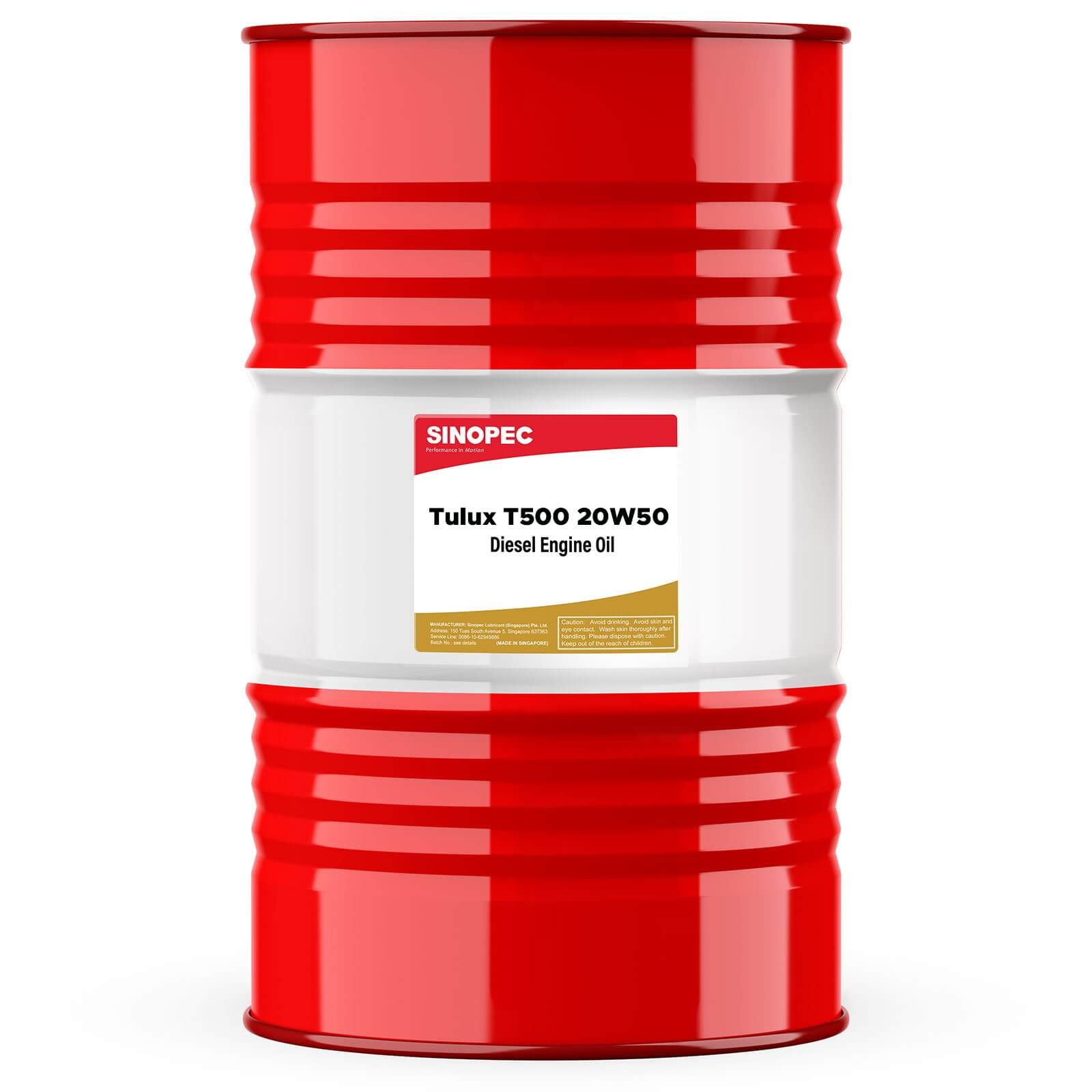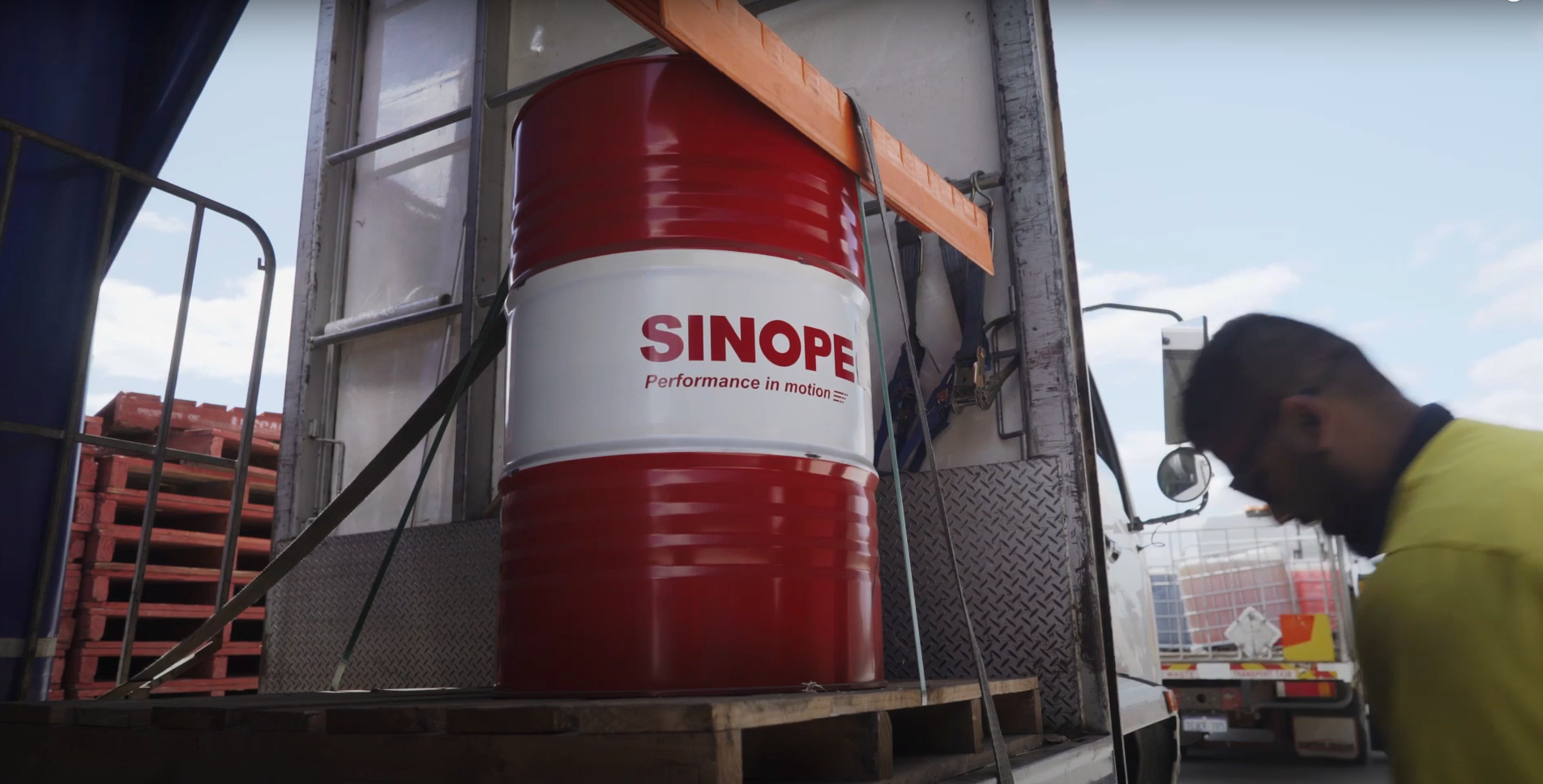Additive – Any substance added to a lubricant to modify its properties. Typical examples are antioxidants, corrosion inhibitors, anti-wear, and extreme pressure (EP) additives.
Adhesion –The force or forces between two materials in contact, such as lubricating grease and a metal substrate, that causes them to stick together.
Age Hardening –Increase in consistency (hardness) of a lubricating grease during storage.
Anhydrous –Without water, for example, a lubricating grease in which no water is detected by ASTM D128.
Antioxidant (Oxidation inhibitor) –An additive used to slow the degradation of lubricants by oxidation. Oxidation is degradation caused by chemical reactions with oxygen. These reactions change the chemical composition and properties of a lubricant.
Anti-Wear Additive — An additive used to protect lubricated surfaces from contacting one another under moderate to high loads, as in the elastohydrodynamic lubrication regime. Antiwear additives function by forming an adsorbed molecular layer on metal parts, thus keeping the surfaces separated. For more highly loaded applications, extreme pressure (EP) additives are required.
Apparent Viscosity –The apparent viscosity of grease refers to flow under applied shear measured according to ASTM D1092. Apparent viscosity versus shear can be useful in predicting pressure drops in a grease distribution system under steady-state flow conditions at constant temperature.
Appearance –Characteristics of a lubricating grease that are observed by visual inspection: Bloom, Bulk Appearance, Color, Luster and Texture.
ASTM D02.G0 –ASTM International (formerly the American Society for Testing and Materials) is an international standards organization. Committee D02 covers petroleum products, liquid fuels, and lubricants. Subcommittee D02.G0 covers lubricating grease.
API Groups I – V –The lubricating fluid in a grease can be mineral oil (derived from petroleum), a synthetic fluid, or a vegetable based fluid. Lubricant base fluids are divided into five groups, defined by the American Petroleum Institute (API) as follows:
Group I — Paraffinic mineral oil, typically produced by solvent extraction processes, with a sulfur content of >0.03% and/or saturates <90%. The viscosity index is in the range from 80 to 120.
Group II — Paraffinic mineral oil, typically produced by a combination of solvent extraction and catalytic processes, with a sulfur content of <0.03% and saturates >90%. The viscosity index is in the range from 80 to 120.
Group III – Paraffinic oil produced by severe hydrocracking processes, with a sulfur content of <0.03% and saturates >90%. The viscosity index is >120. Group III oils are considered to be synthetic. Gas-to-liquid base oils are classified as Group III materials.
Group IV — Polyalphaolefins. This group is dedicated only to polyalphaolefin (PAO) fluids. PAO is a synthetic lubricant base stock.
Group V — This group covers all base stocks not covered elsewhere. It includes all synthetic fluids other than PAO, as well as naphthenic mineral oils.
Applied Shear Stress –The motive force per unit area for fluid flow.
Asperity –An asperity is a microscopic “bump” or “peak” on a surface.
Biodegradable –Biodegradable lubricants are those products that decompose or transform in the environment due to the action of organisms or their enzymes (found in groundwater or soil). A lubricant is defined as biodegradable if it contains <10% by weight oxygen content and undergoes ≥60% biodegradation as theoretical CO2 in 28 days and ≥67% biodegradation as theoretical O2 uptake in 28 days in laboratory testing. Biodegradable products should not be confused with food grade.
Bleeding –The separation of liquid from a lubricating grease.
Blending –Blending is the process of mixing components to produce a mixture with desired properties.
Bloom –The surface color (usually blue or green) of a lubricating oil or grease when viewed by reflected daylight at an angle of about 45 degrees from the surface. Bloom is associated with the absorption of ultraviolet light in the oil and may not be visible if the sample is viewed using artificial light.
Boundary Lubrication –See Lubrication.
Bulk Appearance –Visual appearance of grease when the undisturbed surface is viewed in an opaque container. See also Texture. Bulk Appearance should be described in the following terms-
Bleeding – Free oil on the surface or in the cracks of grease.
Cracked – Surface cracks
Grainy – Small granules or lumps of thickener or additive particles.
Rough – Many small irregularities.
Smooth – Relatively free of irregularities.
Cavitation –Formation of a void due to reduced pressure in lubricating grease or oil. Cavitation of a lubricating grease in a dispensing system can prevent the grease from flowing.
Certified Lubricating Grease Specialist (CLGS) — A standard that certifies that an individual possesses a defined level of expertise in the field of lubricating grease. Certification indicates that NLGI recognizes the individual as a grease expert. Certification is awarded after an individual passes a two-hour exam that consists of 120 questions about lubrication fundamentals and grease types, selection, manufacturing, applications, maintenance, testing, etc.
Channeling –1) The tendency (usually desirable) of a channel to form when grease is worked in a bearing, leaving shoulders of unworked grease that serve as a seal and a reservoir of oil.
2) The tendency of liquid lubricants and flow-type lubricating greases at low temperatures to form a plastic structure sufficiently strong to resist flow under gravitational forces. Similar to, but not identical to the pour point of liquid lubricants, it is measured with empirical tests such as Method 3456.2 in Federal Test Method Standard No. 791 (D).
Coefficient Of Friction –Consider two relatively flat surfaces that are in contact, such as a block on a tabletop. When there is no relative motion between these two surfaces, the coefficient of initial friction is the ratio of the force applied to initiate relative sliding motion (parallel to the surfaces) to the force due to the load (perpendicular to the surfaces). The coefficient of kinetic friction is the ratio of the applied force to the load in order to maintain sliding motion. The term coefficient of friction usually refers to the coefficient of kinetic friction.
Cohesion –Attractive forces between molecules in a substance. For example, cohesion between molecules in grease contribute to its resistance to flow.
Cold SETT – See Sett.
Colloid –A substance that consists of microscopically dispersed insoluble particles that are suspended throughout another substance, typically in a fluid. Lubricating grease is a colloidal system of thickener particles or fibers in oil. (see also Thickener).
Color –(of lubricating grease) The shade and intensity observed when lubricating grease is viewed under conditions that eliminate Bloom. For example, lubricating grease in an opaque container such as a metal package can be observed under reflected light from a position approximately perpendicular to the surface. Grease color can also be observed with transmitted light by placing the sample on a transparent plate. It is important to indicate the method used to determine the color of grease. Colors of lubricating greases are best described in terms of the predominant hue such as amber, brown (or perhaps green, red, or blue for dyed grease) with a qualifying adjective describing intensity in terms of light, medium, or dark.
Color –(of lubricating oil) – That shade shown when viewed under transmitted light only. Usually lubricating oil colors are obtained by viewing under specified conditions in test equipment. Several such methods are available, the most widely used being ASTM D1500, which describes the colors in terms of numbers.
Complex Soap -A soap thickener wherein the soap crystal or fiber is formed by co-crystallization of two or more compounds:
1) The primary soap (such as metallic stearate or oleate).
2) Complexing agents such as metallic salts of short chain organic acids or inorganic salts. The complexing agent modifies grease characteristics and usually increases the dropping point.
Cone Penetrometer –A device described in ASTM D217 and D1403 that measures the consistency of lubricating grease. The device consists of a freely moving cone and shaft assembly, a pedestal for placing the grease sample below the cone, a locking device to stop the motion of the cone and shaft, and a scale for measuring the depth to which the cone penetrates the grease.
Consistency (Hardness) –The degree to which lubricating grease resists deformation under the application of force. Consistency characterizes the plasticity of a solid in much the same way that viscosity characterizes a fluid. Grease consistency is usually measured by cone penetration according to ASTM D217 (IP 50) or ASTM D1403.
Corrosion –The gradual destruction and/or pitting of a metal surface due to chemical reactions with the environment. The most common form of corrosion is caused by oxidation of metal or electrochemical reactions of metal with oxygen or aggressive ions. (See also Fretting).
Corrosion Inhibitor –An additive that is used to enhance the corrosion prevention properties of the grease to which it is added. Test methods for corrosion prevention properties of grease include D1743, D5969, and D6138 for ferrous metals and D4048 for copper. Different types of chemistries are used for the different types of metals to be protected.
Dispensability –The ease with which grease may be transferred from its container to its point of application. Mostly used in discussion of grease dispensing systems, where it includes both the properties of pumpability and feedability.
Dropping Point –The temperature at which a drop of fluid falls from the orifice of the test apparatus under the conditions of ASTM D 2265. The dropping point is not the melting point of lubricating grease. Dropping point is used in many grease specifications. However, this test has very limited relevance to service performance. Dropping point should not be used to determine the upper operating temperature of a grease. However, certain bearing life tests can show how well lubricating grease performs under applied loads at high temperatures under actual operating conditions.
Dry Film Lubricant –Dry or solid lubricants form films that reduce friction without the need for oil. Dry lubricants are often used in locks, certain bearings, and applications at high temperatures and oxidizing conditions. Examples include graphite, molybdenum disulfide, boron nitride, PTFE (polytetrafluoroethylene) and certain soaps.
Dynamic Viscosity –The ratio between the applied shear stress and rate of shear of a liquid. The dynamic viscosity can be measured by placing the liquid between two parallel plates, and measuring the force required to move one plate while holding the other plate fixed.
Elastohydrodynamic Lubrication –See Lubrication.
Evaporation Loss –That portion of a lubricant that volatilized in use or in storage. Widely used test methods are ASTM D972 and D2595.
Extreme Pressure (EP) Additive –Extreme pressure (EP) additives are additives that provide added load carrying capacity under boundary lubrication conditions. EP additives chemically react with the metal surface under conditions of high load and elevated temperature, forming a chemically bonded lubricating film.
Extreme Pressure Property (EP)–The ability of a lubricant to reduce scuffing, scoring and seizure that can occur when highly-loaded moving surfaces are in contact. High loads are applied to moving surfaces that are in contact. Commonly used laboratory test measurements of EP level are Timken OK Load (ASTM D2509 (grease) and D2782 (oil)) and Four Ball Weld and Load Wear Index (ASTM D2596 (grease) and D2783 (oil)).
False Brinelling –Localized fretting that occurs when the rolling elements of a bearing vibrate or oscillate with small amplitude while pressed against the bearing race. The mechanism proceeds in stages: 1) asperities weld, are torn apart, and form wear particles, which may then be oxidized; 2) the wear particles are abrasive and accelerate wear. The resulting wear depressions appear similar to Brinell depressions obtained with static overloading. (See also Fretting). Note: Asperities are microscopic “bumps” or “peaks” on surfaces.
Feedability –The ability of lubricating grease to flow under suction in a dispensing pump at a rate at least equal to pump delivery capacity. (Some lubricating greases do not feed satisfactorily and cause cavitation at the inlet to a dispensing pump. In such cases, feedability can often be improved by the use of follower plates).
Fiber – Soap thickeners form microscopic fibers in lubricating grease. Some soaps crystallize in the form of threads, which are 20 or more times as long as they are thick. (Most soap fibers are microscopic in size, so that the grease appears smooth to the eye). Some greases have a fibrous appearance when fiber bundles are large enough to be seen by the unaided eye. The most common fibrous lubricating greases contain sodium based thickeners, although not all sodium base greases are fibrous. (See also Appearance and Texture).
Fibril –An extremely small fiber, barely visible even at maximum magnification of an electron microscope. Fibrils may collect in bundles to form larger fibers.
Filler – A material added to a grease to increase bulk or density. Dependent on type and amount, a filler may contribute to, detract from, or have no effect on the lubricating properties of the grease. Examples of fillers are talc, pigments, and carbon black.
Film Strength –The ability of a film of lubricant to resist rupture due to load, speed, and temperature.
Follower Plate –A plate fitted to the top surface of lubricating grease in a container and designed to assist delivery of grease to the inlet of the dispensing system.
Food Grade –A food grade lubricant is one suitable for use when incidental food contact may occur. It is given the H1 designation by a certifying body such as NSF International or InS Services. Food grade lubricants are formulated to minimize risks associated with unplanned trace contamination in food and beverages. Components for H1 lubricants often carry the HX1 designation.
Four-Ball Weld Point –In ASTM D2596, the applied load at which the lubricant can no longer prevent metal-to-metal contact, and the standard steel balls used in the test weld together.
Fretting Wear–A form of wear caused by vibratory or oscillatory motion of limited amplitude and characterized by the removal of fine particles from the rubbing surfaces. Fretting wear is often followed by localized oxidation, hence the term Friction Oxidation. In the case of ferrous metals, the oxidized wear particles are abrasive iron oxide (Fe2O3) that resemble rust, which has led to the term Fretting Corrosion. (See also False Brinelling). Note: Wear is damage that removes material from a surface.
Fretting Corrosion –Fretting corrosion occurs between a bearing inner ring and shaft or the outer ring and housing. The corrosion occurs at points where the fit is too loose. When the fit is too loose, the metal oxide film can be worn away, allowing oxygen from the air to attack the underlying metal. The build-up of corrosion products can cause severe bearing damage, including cracking of bearing rings.
Friction –The force resisting relative motion between two surfaces that are in contact.
Friction Oxidation — See Fretting Wear.
Gel –An elastic, jelly-like material that resembles a solid but flows like a liquid. Most gels are dispersions of liquids in networks of colloidal particles or polymers.
Grease – See Lubricating Grease.
Grease Worker –A device designed to apply shear to a grease. The full-scale grease worker consists of a metal cup of standard dimensions, and a cover fitted with a handle and shaft attached to a metal plate drilled with 61.x ¼-inch holes. The plate is designed to be pushed through the grease sample to be worked. The device can be manually or mechanically driven. For ½-scale and ¼-scale penetrations, the equipment is progressively smaller. The equipment details can be found in ASTM D217 (full-scale) and ASTM D1403 (small-scale).
Grease Worker Cup –A machined metal cup that holds grease for working. It is also the cup that is used to hold the grease for penetration measurement. A full-scale worker cup holds about one pound (450grams) of grease. See ASTM D217 for the details of the cup dimensions. Smaller scale (½- and ¼-scale) worker cups are detailed in ASTM D1403.
Homogenization –The process of very thoroughly mixing and applying intensive shear to improve the dispersion of components in a mixture. Grease is homogenized to disperse the thickener, improve the bulk appearance, improve the yield, and reduce the cost of the product.
Hydrated Soap –A soap that has water associated with its structure. A typical example is a water-stabilized calcium soap grease, which owes its stability to hydrated calcium soap.
Hydrodynamic Lubrication – -See Lubrication.
Hydrophilic — Having an affinity for water; capable of uniting with or dissolving in water.
Hydrostatic Lubrication –See Lubrication.
Incompatibility –Two lubricating greases are incompatible when a mixture of the products has physical or performance properties that are inferior to those of the individual greases. Physical or performance properties inferior to one of the products and superior to the other may be due to simple mixing and would not be considered as evidence of incompatibility.
Induction Period (Grease Oxidation) –A period of time during which oxidation occurs at a relatively slow rate. The point at which a change occurs to a significantly more rapid rate is the end of the induction period. Methods of measurement of induction time include ASTM D942 and D5483.
Inorganic Acid — An acid that does not contain a carbon chain. Inorganic acids, such as boric acid, are sometimes used as complexing agents in complex soap greases. Contrast with Organic Acid.
Inorganic Salt –The reaction product of an alkali with an inorganic acid. Inorganic salts, such as lithium borate, are sometimes found in complex soap greases.
Inorganic Thickener –See Non-Soap Thickener.
Insolubles –Components of a lubricating grease that are insoluble in the prescribed solvents in an analytical procedure such as ASTM D128. The analytical procedure should be indicated when specifying insolubles. Additional identifying analytical tests are required to determine the nature and composition of insolubles, which may consist of fillers, additives, certain types of thickeners, or impurities.
Kinematic Viscosity –The resistance of a liquid to flow under gravity. Kinematic viscosity can be measured directly, as in ASTM D445. It is measured by the time required for a volume of liquid to flow under gravity through a calibrated glass capillary viscometer. Standard temperatures of 40°C and 100°C are typically used. Kinematic viscosity can also be calculated as the ratio of the dynamic viscosity to the density of the liquid.
Load Wear Index –An index of the ability of a lubricant to minimize wear at applied loads. The test consists of four steel balls in a pyramid configuration, with three balls fixed and one ball turning against the other three. The applied load is increased step-wise, until welding (seizure) occurs. The load wear index is calculated based on the wear scars of the 10 highest non-seizure loads. See ASTM D2596 for further details.
Lubricant –Any material that is used or applied to surfaces in order to reduce friction and/or wear that can occur when two surfaces are in contact and undergo relative motion. Lubricants are available in various forms: liquids, greases, dry films, and coatings.
Lubricating Grease –A lubricant that is a solid to semi-fluid dispersion of a thickening agent (thickener) in a liquid. A lubricating grease may be formulated with additives that impart special properties such as resistance to oxidation or wear.
Lubricating Grease Structure –The physical arrangement of thickener particles or fibers in a lubricating grease. The nature, form, and stability of this arrangement determine the appearance, texture, and physical properties of the grease.
Lubrication –The use or application of a material (lubricant) to reduce friction and/or wear that can occur when two surfaces undergo relative motion while in contact under an applied load. Friction and lubrication performance depend upon the relative speed of the surfaces, the lubricant viscosity, and the applied load. There are four major lubrication regimes or types of behavior.
Boundary Lubrication –The lubricant film is too thin to form a fluid layer that completely separates two surfaces. Asperities or microscopic “peaks” on the surfaces collide. Friction and wear depend upon the presence of chemical additives that adsorb and form molecular layers on the surfaces.
Elastohydrodynamic Lubrication –Elastohydrodynamic or EHD lubrication is intermediate between boundary and hydrodynamic lubrication. EHD results from two effects. EHD occurs in rolling bearings and certain gears when very high loads are concentrated on small surface areas. Under these conditions, the surfaces can deform elastically or flatten to increase the surface area that bears the load, Lubricant can be trapped between the surfaces, and its viscosity can increase under the pressure. As a result, the lubricant is able to form a hydrodynamic film and separate the surfaces.
Hydrodynamic Lubrication –Under appropriate conditions, the relative motion of two sliding surfaces causes a continuous fluid film to form and completely separate the surfaces. This requires a balance between the sliding speed, the applied load, and the lubricant viscosity. Fluid Film Lubrication is another name for this type of lubrication.
Hydrostatic Lubrication –Lubricant is supplied under pressure to a plain bearing. This applied pressure forces the lubricant to form a continuous fluid film that completely separates the surfaces. Hydrostatic lubrication is used typically during start-up of plain bearings. Hydrodynamic lubrication becomes effective when plain bearings are in motion.
Luster – The intensity of light reflected by lubricating grease- its sheen or brilliance. Luster should be described as follows:
Bright –Reflects light with a relatively strong intensity.
Dull – Reflects light with a relatively weak intensity. Some greases with a high water content may have a dull luster. Certain thickeners and fillers give a grease a characteristic dull luster.
Macroscopic –Visible to the unaided human eye, not microscopic, where the particles are at least 40 μ or 0.0015 in. in size.
Mechanical Stability –See Shear Stability.
Metallic Soaps –Metallic soaps are the most common thickeners used in lubricating greases. Materials such as NaOH (sodium hydroxide), Leo(lithium hydroxide), Ca(OH)2 (calcium hydroxide), and Al(OH)3 (aluminum hydroxide) contain basic or alkaline hydroxide groups (-OH). These materials are mixed with organic fatty acids in oil and heated to prepare grease. The –OH groups react with acidic –H atoms on fatty acids such as stearic acid. This reaction produces thickener fibers plus water as a by-product, This reaction is known as saponification.
Microscopic –Not visible to the unaided human eye, smaller than 40 μ or 0.0015 in. in size.
Newtonian Behavior –Simple liquids are said to be Newtonian when the applied shear stress is directly proportional to the shear rate. In other words, the viscosity (applied shear stress/shear rate) of a Newtonian fluid is constant and does not depend on shear stress or shear rate at constant temperature.
NLGI Grade –A numerical scale for classifying the consistency of lubricating greases, based on the ASTM D217 worked penetration at 25°C (77°F). NLGI Grades are in order of increasing consistency (hardness) as follows:
NLGI Consistency Number Worked Penetration Range, 25°C (77°F)
000 445-475
00 400-430
0 355-385
1 310-340
2 265-295
3 220-250
4 175-205
5 130-160
6 185-115
Some grease suppliers use descriptions such as NLGI Number 1.5, which indicates that the grease is between NLGI Numbers 1 and 2.
Non-Newtonian Behavior –Some fluids and many plastic solids, including lubricating grease, exhibit non-Newtonian behavior. In other words, the viscosity (applied shear stress/ shear rate) is not constant, but depends on shear stress and shear rate at a given temperature. Thus, non-Newtonian fluids are described by their apparent viscosity, which may vary widely with the shear rate. Conventional types of viscometers with uncontrolled shear rates are not suitable for measuring Non-Newtonian materials.
Non-Soap Thickener –Any of several specially treated naturally occurring or synthetic materials, excepting the metallic soaps, which can be either thermally or mechanically dispersed in liquid lubricants to form lubricating grease. Sometimes called Synthetic Thickener, Inorganic Thickener, or Organic Thickener.
Oiliness Agent –A material which reduces friction by formation of an adsorbed film.
Organic Thickener –See Non-Soap Thickener.
Oleate –An oleate is a salt or ester of oleic acid. Oleic acid is a fatty acid with chemical formula C18H34O2 or CH3-[CH2]7-CH=CH-[CH2]7-COOH. Oleate greases are made by reacting oleic acid with an inorganic base to form a salt, i.e., soap thickener.
OK Load –The OK load or the Timken OK load describes the load-carrying capacity of a lubricant. The OK load is measured in a standard test (ASTM D 2509). In this test, a bearing ring rotates against a stationary steel block under an applied load. The OK load is the maximum load that can be applied without scoring the steel block. It is used to characterize the extreme pressure performance of greases and lubricants. The name of this test refers to the Timken Company, which developed this machine.
Operating Temperature –The operating temperature of a grease is the range between the lowest temperature where a lubricated device can be started up in an acceptable manner and the highest temperature where lubrication is adequate. The operating temperature of a grease depends on its formulation (base fluid, thickener, additives). In this context, temperature is measured in the general vicinity of the lubricated contact and not between loaded surfaces. Low-temperature bearing or flow tests are used often to determine the minimum operating temperature. High-temperature bearing tests are used typically to determine the maximum operating temperature. Dropping point alone is not sufficient to determine the maximum operating temperature of a grease.
Organic Acid –In general, organic acids are organic chemicals with acidic properties. Organic compounds contain primarily carbon (C) and hydrogen (H), and may contain smaller amounts of nitrogen (N), oxygen (O), sulfur (S), etc. Acidic molecules tend to release H atoms by reacting with basic molecules or dissociating in polar solvents. Many organic acids contain a -COOH or carboxyl group that can release an H atom.
Organic Soap –An organic soap is an organic molecule that is formed by the chemical reaction of an acid and a base. Many grease thickeners are organic soaps formed by reactions of organic acids with inorganic bases. For example, grease can be prepared by reacting 12-hydroxystearic acid and lime (calcium hydroxide ) in base fluid to form calcium 12-hydroxystearate soap, which thickens the fluid to form grease.
Oxidation Stability –The resistance of lubricants to chemical reactions with oxygen. The absorption and reaction of oxygen may lead to degradation of lubricants. Several test methods are in use, including ASTM D942 (IP 142) and D5483.
PAO –Polyalphaolefins (PAOs) are hydrocarbon oils that are synthesized by reacting (polymerizing) 1- octene and/or 1-decene. PAOs are API Group IV base oils. They are noted for their chemical purity, consistent molecular weight distribution, and high viscosity index, and they can be used over a wide range of temperatures.
Penetration –An arbitrary standard measure of consistency (hardness) based on ASTM D217 (IP 50). The softer the consistency, the higher the penetration number.
The ASTM Definitions are:
Penetration –The depth that a standard cone penetrates a sample of lubricating grease under prescribed conditions of cone weight, time and temperature. Penetration is measured in tenths of a millimeter, sometimes abbreviated dmm.
Undisturbed Penetration –The penetration of a sample of lubricating grease that has not been stirred or disturbed measured at 25°C (77°F).
Unworked Penetration –The penetration at 25°C (77°F) of a sample of lubricating grease that has received only minimum disturbance in transferring to a grease worker cup or dimensionally equivalent container.
Worked Penetration –The penetration at 25°C (77°F) of a sample of lubricating grease immediately after it has been subjected to 60 double strokes in a standard grease worker.
Prolonged Worked Penetration –The penetration at 25°C (77°F) of a sample of lubricating grease that has been subjected to more than 60 double strokes in a standard grease worker at a temperature of 15°-30°C (59°-86°F). Typical numbers of double strokes used for prolonged working are 10,000 and 100,000. After the prescribed number of double strokes, the sample is brought to 25°C (77°F), and worked an additional 60 double strokes, and penetration is then measured without delay.
Block Penetration –The penetration at 25°C (77°F) of a sample of lubricating grease that is sufficiently hard to hold its shape, determined on the freshly prepared face of a cube cut from a block of grease.
Plasticity –The property of an apparently solid material that enables it to be permanently deformed under the application of force without rupture. Plastic flow differs from fluid flow in that the shearing stress must exceed a yield point before any flow occurs.
Pumpability –The ability of a lubricating grease to flow under pressure through the line(s), nozzle(s), and fittings(s) of a grease dispensing system. It is best indicated by the apparent viscosity at moderate shear rate. See ASTM D1092 and NLGI Publication, NLGI Steady Flow Charts for Grease.
Reversibility –The ability of a grease to return to its normal grease-like consistency after temporary exposure to temperatures near or above the dropping point of that grease. Only a few types of greases have this property.
Rheology –Study of the deformation and/or flow of matter in terms of stress, strain, temperature and time.
Rheopectic Grease –A lubricating grease that undergoes an increase in consistency (hardens) when it is subjected to shear.
Penetrometer –See Cone Penetrometer
Saponification –The chemical reaction of fatty acids, fats or esters with an alkali metal to form the metallic salt. This salt is commonly called soap.
Set –In manufacture of a lubricating grease, the change from a fluid to a semi-fluid or plastic state.
Scoring ––A form of wear that resembles scratches along the direction of motion of sliding surfaces. Causes include contaminated or insufficient lubrication, excessive loads, vibration and lack of anti-wear or extreme pressure additives in lubricant.
Scuffing –A form of wear that resembles a dull or matte area on sliding surfaces. Causes include contaminated or insufficient lubrication, excessive loads, vibration and lack of anti-wear or extreme pressure additives in lubricant.
Seizure –A type of damage that occurs when rolling surfaces overheat suddenly or rapidly, and metal surfaces such as bearings and raceways soften, melt and deform. Causes include inadequate or contaminated lubrication, excessive speed or load, and inadequate clearances
SETT –The word “SETT” is uniquely applied to a particular type of product, i.e., Cold Sett greases, which change from a fluid to a semi-fluid or plastic state after component combination and often after packaging.
Shearing –Slipping or sliding of one part of a substance relative to an adjacent part. In a solid, such action involves cutting or breaking of the crystal structure, but in a fluid or plastic, shearing does not necessarily destroy the continuous nature of the substance.
Shear Rate –The rate of a slip within a substance engaging in flow. The average or mean shear rate in a pipe or tube is proportional to the average velocity divided by the radius of the tube. It, therefore, has the dimensions of the reciprocal of the time and is usually expressed in the unit of reciprocal seconds (sec-1). The mean shear rate is reported in the determination of apparent viscosity in ASTM D1092.
Shear Stability –The ability of a lubricating grease to resist changes in consistency (hardness) during mechanical working. Working may be in any of several types of laboratory machines or may be in actual service. This may also be called Mechanical Stability.
Shear Stress –The force per unit area tending to cause shearing in a substance. In fluids, the ratio of the shear stress to the shear rate is the viscosity of the substance.
Simple Soap –Simple soaps are grease thickeners that are prepared by reacting a single organic acid with one or more inorganic bases. Complex soaps are prepared from two or more organic acids.
Slumpability –See Feedability.
Soap –See Thickener; Complex Soap; Saponification.
Soap Crystal –See Soap Thickener
Soap Thickener –Many greases are prepared by reacting organic acid(s) and inorganic base(s) in base fluid to form salt crystals. These crystals are partially soluble in base fluid and form colloidal particles or fibers dispersed in the fluid. These particles or fibers are responsible for the semi-solid consistency of grease, and they are referred to as soap thickeners.
Sol –A suspension of particles of colloidal dimensions in a liquid. These systems possess the gross properties of a liquid.
Squeeze Film Lubrication –That state of lubrication in which surfaces thickly coated or flooded with lubricant move toward each other at sufficient speed to develop fluid pressure sufficient to support a load of short duration. Because of viscosity (or apparent viscosity), the lubricant cannot immediately flow away from the area of contact. This action occurs, for example, between gear teeth and between wrist pins and their bushings.
Steady-State Flow –A fluid is described as undergoing steady-state flow when its properties at any given point are unchanging, which is the case during laminar flow.
Stearate –In general, a stearate is a salt or ester of stearic acid. Stearic acid is a fatty acid with chemical formula C18H36O2 or CH3-[CH2]16-COOH. Stearate greases are made by reacting stearic acid with an inorganic base to form a salt, i.e., soap thickener.
Syneresis –Loss of liquid lubricant from a lubricating grease due to shrinkage or rearrangement of the structure. The shrinkage may be due to either physical or chemical changes in the thickener. Syneresis is a form of oil separation.
Synthetic Grease –A grease composition in which the liquid lubricant is other than mineral or vegetable oil.
Texture –That property of lubricating grease which is observed when a small separate portion of it is pressed together and then slowly drawn apart. Texture should be described in the following terms:
Brittle – Has a tendency to rupture or crumble when compressed
Buttery – Separates in short peaks with no visible fibers.
Long Fibers – Shows tendency to stretch or string out into a single bundle of fibers.
Resilient – Capable of withstanding moderate compression without permanent deformation or rupture.
Short Fibers – Shows short break-off with evidence of fibers.
Stringy – Shows tendency to stretch or string out into long fine threads, but with no visible evidence of fiber structure.
Tacky – The property of adhesiveness, especially to metal surfaces. Greases containing polymers tend to be tacky.
Other terms, such as Smooth, Rough, Grainy, etc., are defined under Bulk Appearance.
Thickener –The solid particles which are relatively uniformly dispersed in a liquid lubricant to form the structure of lubricating grease. The solid particles may be fibers, as is the case with various metallic soaps, or plates or spheres, as is the case with some of the non-soap thickeners. The general requirements are that the particles can be dispersed uniformly in the liquid lubricant where they interact to form a stable structure.
Thixotropy –Decrease in grease consistency (softening) as a result of shearing, followed by an increase in consistency (hardening) after shearing is stopped. (Thixotropic age hardening is a relatively prolonged process proportional to aging time and is seldom, if ever, complete. In contrast, the apparent viscosity increase in non-Newtonian systems with decreasing shear rate is instantaneous and fully reversible. Lubricating grease is both thixotropic and non-Newtonian.)
Timken OK Load –See OK Load
Water Resistance –The ability of lubricating grease to withstand the addition of water to the lubricant system without adverse effects. Water Resistance is generally considered to be made up of four components as listed below:
Water Washout Resistance – The ability of a lubricating grease to resist being removed from a bearing when operated with exposure to water. (Generally measured by ASTM D1264).
Water Absorption Characteristic – The characteristics of a lubricating grease when water is added to the lubricating system. Water Absorption Characteristics may be measured by any of several suitable tests in which the lubricating grease may react in any of three ways, described as follows:
Water Soluble – The lubricating grease absorbs the water, and then de-gels to semi-fluid consistency.
Water Absorbent – The lubricating grease absorbs relatively large quantities of water with small or no change in consistency, and without leaving free water as a separate phase
Water Resistant – The lubricating grease does not absorb more than small amounts of water, does not change appreciably in consistency, and leaves the added water as a second phase in the system.
Water Corrosion Resistance – The ability of a lubricating grease to prevent corrosion of metal surfaces when water is present in the lubricating system. May be measured either statically by any of a number of standard tests, or dynamically by actual operation of bearings with water added to the lubricant reservoir (refer to ASTM D1743, D5969, and D6138).
Water Spray Resistance – The ability of a grease to resist displacement from a surface by the impact of water spray. The method of test used to evaluate this characteristic for lubricating greases is given in ASTM D4049
Lubricating greases for various types of service may need any of the several types of water resistance characteristics described above, so that they are not measures of quality except for specific situations where particular properties are required.
Wear –Damage that involves the cumulative and gradual removal of material from surfaces. Three types of wear are described below:
Abrasive Wear – Damage that occurs when surfaces are in contact and undergo relative motion, and cutting or abrasion by hard particles (usually a contaminant) remove material from the surfaces.
Adhesive Wear – Damage that occurs when two surfaces are in contact and undergo relative motion, and high loads and/or temperatures cause asperities on these two surfaces to weld together and then immediately tear apart, removing material from one or both surfaces. Adhesive wear can be mild (frosting), moderate (scuffing), or severe (galling, scoring, seizing).
Corrosive Wear – Damage that occurs when chemical reactions at a surface result in the removal of material. Corrosion can be localized (e.g., pitting) or general (not local).
Working –The subjection of lubricating grease to any form of agitation or shearing action beyond simple transfer to any test apparatus.
Yield –The amount of grease of a given consistency that may be made with a specific amount of thickening agent. As the yield increases, percent thickener decreases.
Yield Point –(Yield value or yield stress) – The minimum shear stress required to produce flow of a plastic material. It can be estimated by the intercept on the shear stress axis of the shear stress and shear rate curve, by extrapolation of the straight portion of the curve; also see ASTM D1092 Apparent Viscosity.
Definitions Relating to Lubricating Grease
Web Help Desk
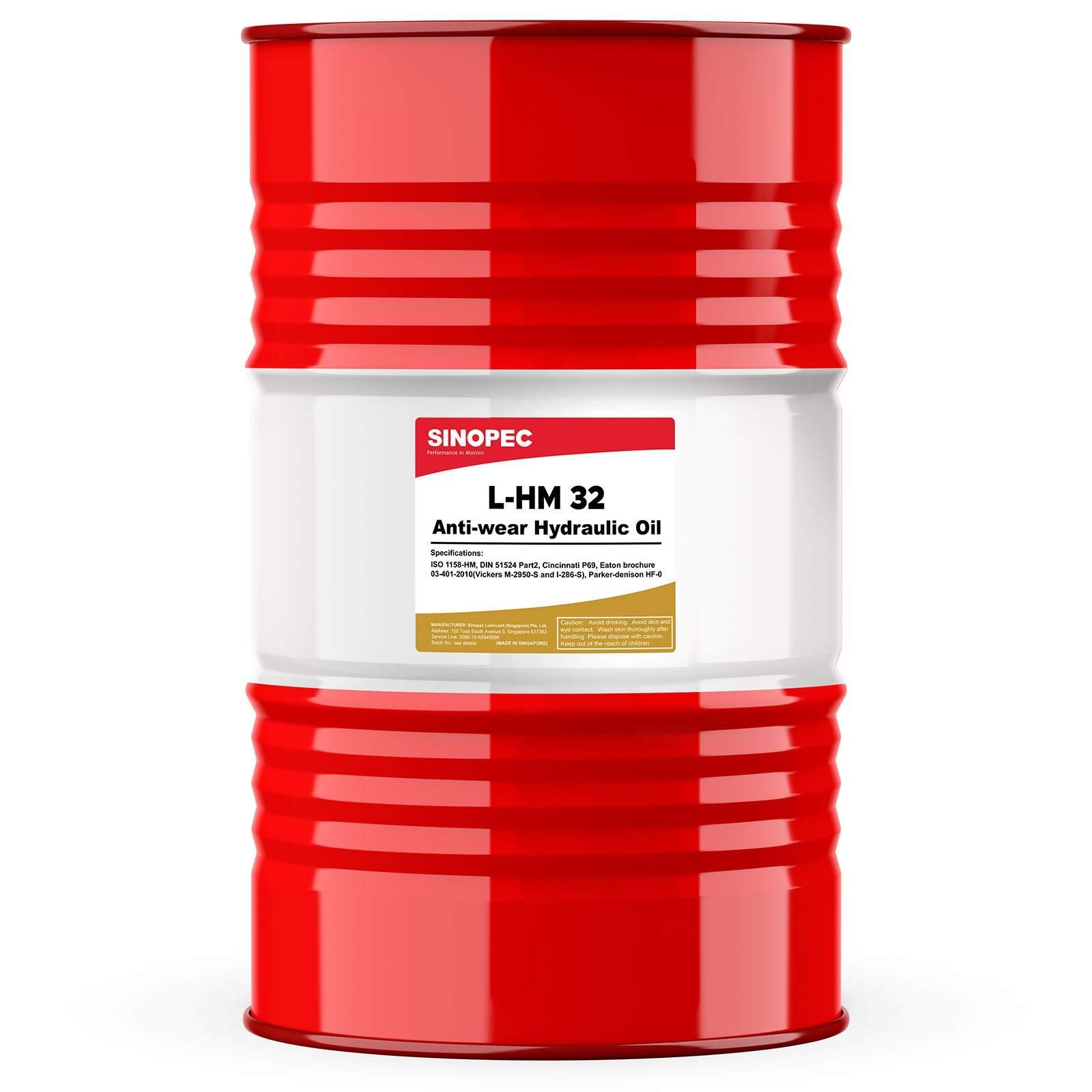
AW 32 Hydraulic Oil - 55 Gallon Drum
Sale price$449.00
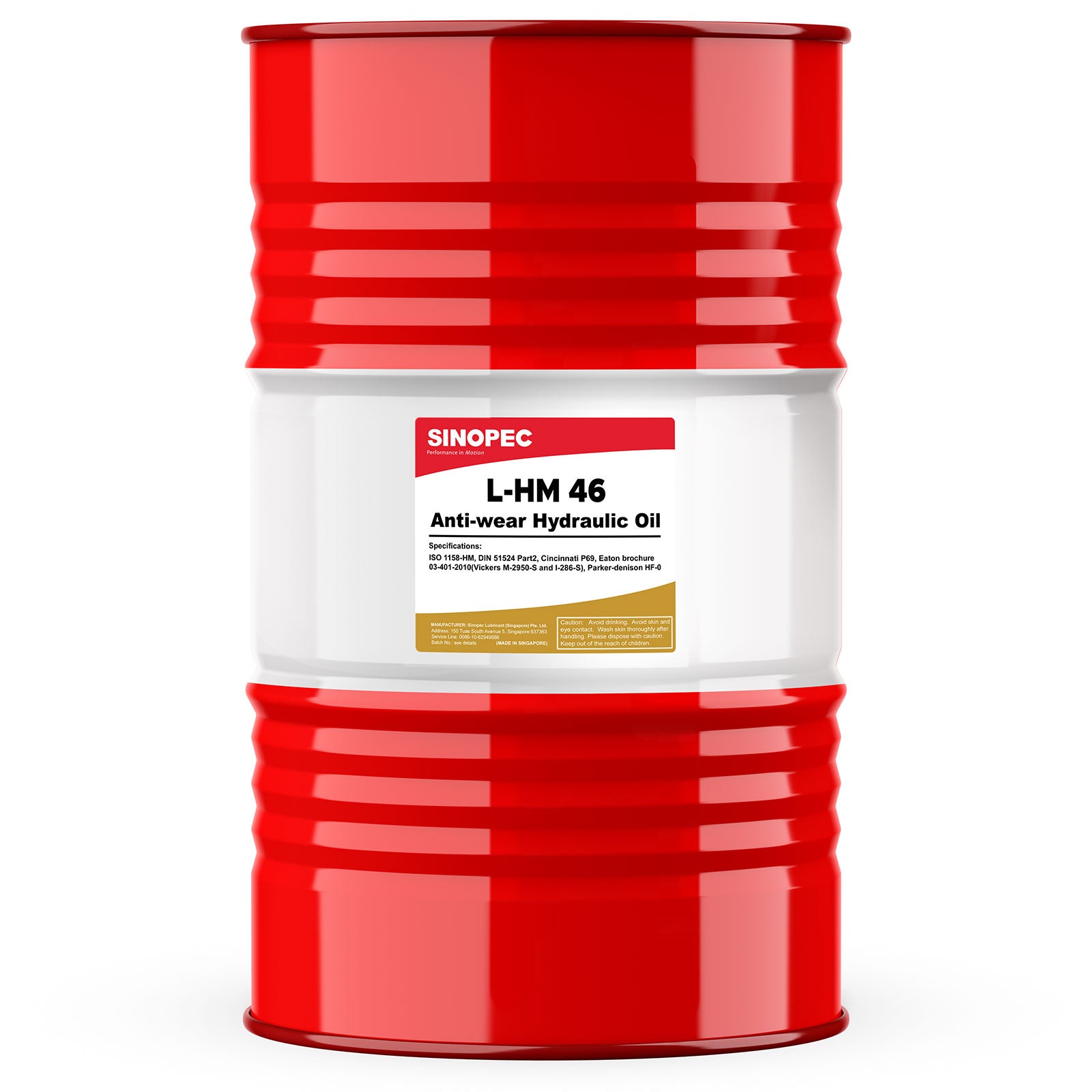
AW 46 Hydraulic Oil - 55 Gallon Drum
Sale price$449.00

AW 68 Hydraulic Oil - 55 Gallon Drum
Sale price$449.00
Where Do We Ship From

